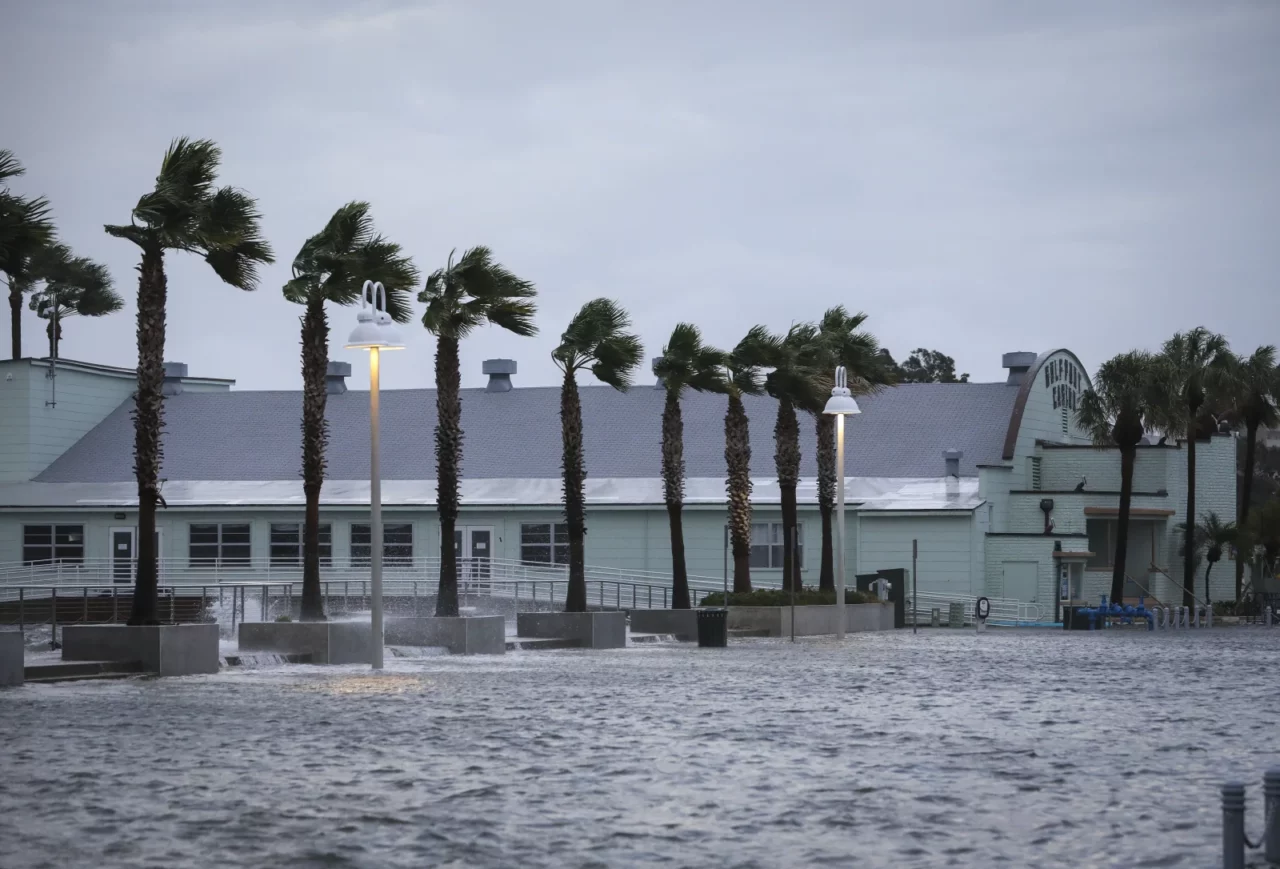
Last year it was Hurricane Ian that drew a bead on Tampa Bay before abruptly shifting east to strike southwest Florida more than 130 miles away. This time it was Hurricane Idalia, which caused some serious flooding as it sideswiped the area but packed much more punch at landfall Wednesday, miles to the north.
In fact, the Tampa Bay area hasn’t been hit directly by a major hurricane for more than a century. The last time it happened, there were just a few hundred thousand people living in the region, compared with more than 3 million today.
“Tampa Bay avoided the worst again,” Brian McNoldy, a senior research associate at the University of Miami’s Rosenstiel School of Marine, Atmospheric and Earth Science, said via email. “A lot of it comes down to luck. It’s happened before (1848, 1921) and will happen again.”
Many in the area live in low-lying neighborhoods that are highly vulnerable to storm surge and flooding they have rarely before experienced, which some experts say could be worsened by the effects of climate change. In such an event, water would bulldoze its way into the relatively shallow bay from the Gulf of Mexico, also not very deep.
“Since the city is nothing like what it was a hundred years ago, the impacts now would be unimaginable. Tampa Bay is shaped and aligned perfectly to allow for huge storm surge,” McNoldy said.
That vulnerability was apparent as Idalia swept past, with storm surge swamping neighborhoods and busy roads, triggering shutdowns of some bridges between Tampa and the St. Petersburg area. Access to barrier islands was temporarily shut off, and several dozen people had to be rescued from flooded homes.
“Make no mistake, this hurricane left its mark,” St. Petersburg Mayor Ken Welch said at a news conference. “The reality is we are not done dealing with the consequences of this major storm.”
Still, it could have been much worse. The storm surge in Tampa Bay was far lower than the levels experienced when Idalia came ashore Wednesday morning as a Category 3 storm near the rural town of Steinhatchee in the Big Bend region.
“We have thankfully not suffered a great deal of damage in our community,” Tampa Mayor Jane Castor said at a Wednesday news conference.
The last time Tampa Bay was hit by a major storm was Oct. 25, 1921, by a hurricane that had no official name but is known as the Tarpon Springs storm for the seaside town famed for its sponge-diving docks and Greek heritage.
The storm surge from that hurricane, a Category 3 with estimated winds of up to 129 mph, was 11 feet. At least eight people died, and damage was estimated at $5 million at the time.
Now the tourist-friendly region known for its sugar-sand beaches has grown by leaps and bounds, with homes and businesses occupying prime waterfront real estate.
The city of Tampa had about 51,000 residents in 1920. Today, there are almost 385,000. Most other cities have experienced similar explosive growth.
Nancy Brindley, 88, has been through around three dozen tropical storms and has lived in Indian Rocks Beach, outside of St. Petersburg, since 1970 in a beachside house that has been a gathering spot for three generations of family and friends. That’s where she rode out Hurricane Idalia with relatives.
Brindley “absolutely” thinks the Tampa Bay area seems to have some special protection, saying, “It’s just a perfect place in so many ways.”
“I think that in this region, that meant that you had all the fish you needed in the bay and you had the Gulfstream (current) that wasn’t too close to you. Fisherman called it the golden triangle. The sweet spot,” Brindley said.
A report from the Boston-based catastrophe modeling firm Karen Clark and Co. concluded in 2015 that Tampa Bay is the most vulnerable place in the U.S. to storm surge flooding and could sustain $175 billion in damage from a major event. A World Bank study a few years earlier rated Tampa as the planet’s seventh-most vulnerable city to major storms.
Yet for years storms have bypassed it. Phil Klotzbach, a research scientist in the Department of Atmospheric Science at Colorado State University, noted that only one of five hurricanes that hit Florida at Category 3 strength or higher has come ashore in Tampa Bay since 1851.
“In general, cyclones moving over the Gulf of Mexico had a tendency of passing well north of Tampa,” the National Oceanographic and Atmospheric Administration said in a report on the 1921 storm.
Also lurking in the waves and wind are the impacts of climate change and the higher sea levels scientists say it is causing.
“Due to global warming, global climate models predict hurricanes will likely cause more intense rainfall and have an increased coastal flood risk due to higher storm surge caused by rising seas,” Angela Colbert, a scientist at NASA’s Jet Propulsion Laboratory, wrote in a June 2022 report.
Amid all the science, a local legend has it that blessings from Native Americans who called the region home have largely protected it from major storms for centuries. Many mounds were built by the Tocobagan tribe in what is now Pinellas County that some believe are meant as guardians against invaders, including hurricanes.
Rui Farias, executive director of the St. Petersburg Museum of History, told the Tampa Bay Times after Hurricane Irma’s near miss in 2017 that many people still believe it.
“It’s almost like when a myth becomes history,” Farias said. “As time goes on, it comes true.”
___
Republished with permission from The Associated Press.



